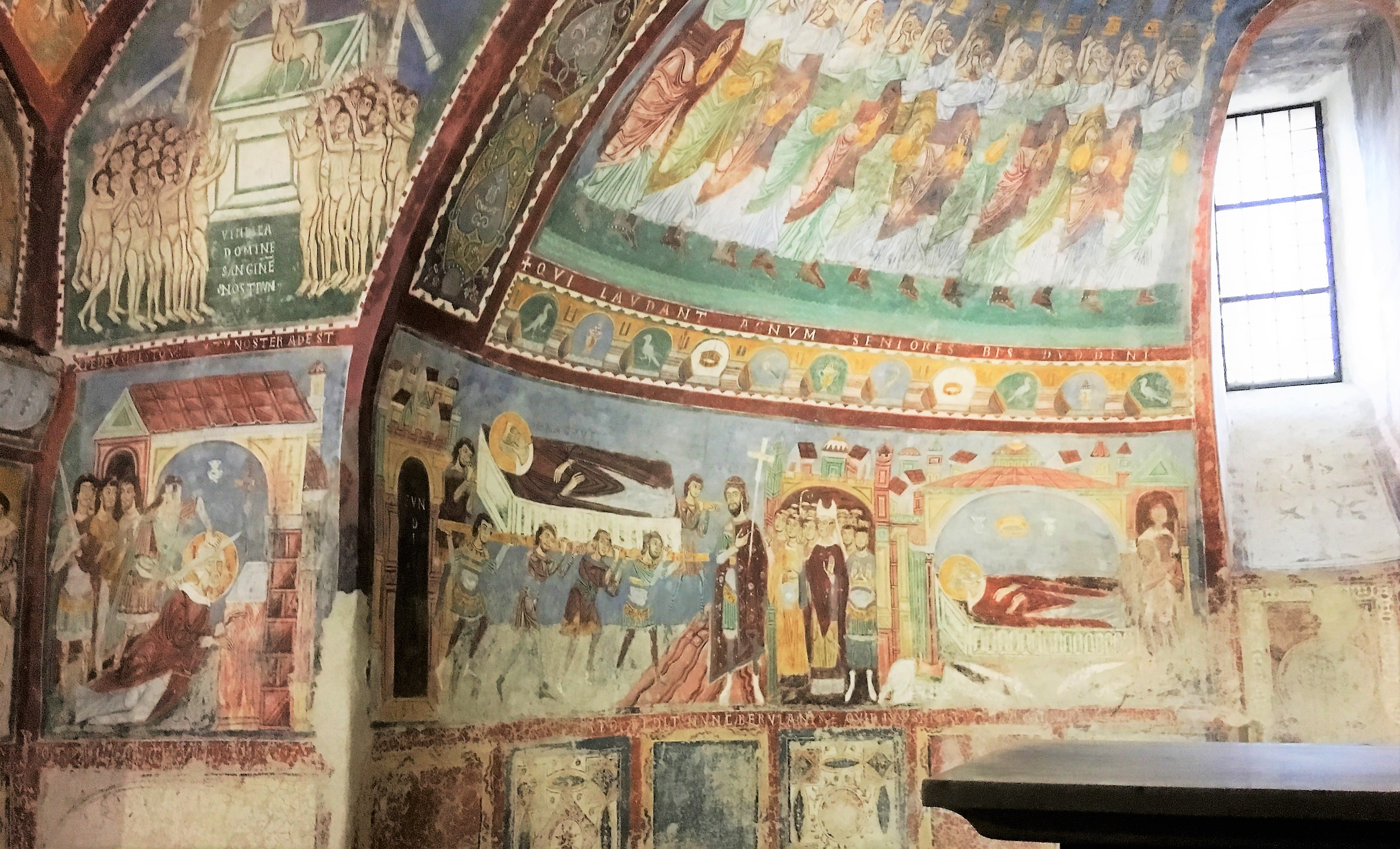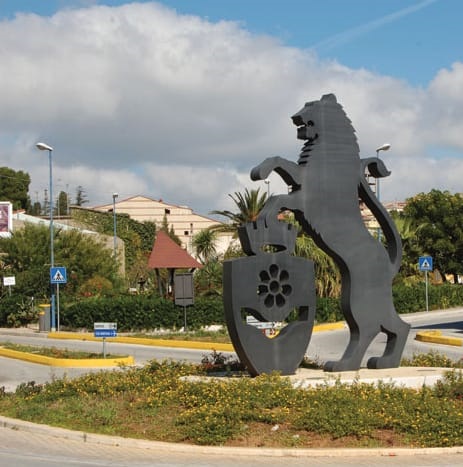Few saints have the honour of Saint Magnus to whom one of the most exciting pictorial cycles of the Middle Ages is dedicated in the crypt of Anagni Cathedral.
But how is so much devotion and so much love possible for a saint who lived in the second century after Christ? How is it possible that devotion continued for all these centuries?
Saint Magnus was a Pugliese, born in Trani, who ended his life in Ciociaria where he committed himself to spread Christianity in the First Campania Region, as then were called these territories of the lower Lazio. He then died in Ciociaria in Ceccano on 19 August 251, and this is the day when he is celebrated all over the world.
In many respects his life follows that of the traditional stories of holy martyrs. As a young man he converted to Christianity and became a bishop of Trani, from which he had to escape for persecution. He walked along the Via Appia and for some reason he found himself at Anagni in Ciociaria just in time to baptize Santa Secondina.
But his reputation grew along the Appia and the soldiers of Emperor Decio chased him to Fondi and found him in a cave in the Ausoni mountains. The soldiers tried to convert him back to paganism and pushed him to worship their gods and gave him a three-day ultimatum.
But when the soldiers returned to the cave they find him dead near the altar. Then they took the body to Ceccano, which was then called Fabreteria Vetus and was a thriving town, and on 19 August they beheaded it.
But the story does not end here because the most interesting part that would lead to the construction and the frescoes of the famous crypt of the Cathedral of Anagni took place a few centuries later.
After his death, the body and the head were brought to Veroli in the Basilica of Santa Salome, one of the three Maria witnesses of the Resurrection and whose body was buried in Veroli. With Santa Salome and Saint Magnus, whose relic was worth much because he had been Bishop of Trani (there is a hierarchy also for relics), Veroli had become a Christian centre of primary importance.
In the ninth century all the lower Lazio was a land desired by the Saracens who arrived in the end at Veroli and decided to rest their horses right in the basilica and precisely in the crypt where was the body of Saint Magnus.
The morning after their arrival they found all the horses dead and attributed their death to a curse of St Magnus, so they decided to get rid of the body of the saint. But knowing of his popularity they decided to earn themselves some money and sell it.
The people of Anagni came forward and were willing to pay them his weight in gold in order to have the relic.
They dedicated the best part of the cathedral crypt that they decorated with frescoes that tell his story. The honour also was enhanced because the legend tells that Saint Magnus appeared several times in a dream to the bishop Pietro di Salerno, the architect of the cathedral, to urge him to complete the construction.
Meanwhile in the site of martyrdom the Monastery of Saint Magnus was built, halfway between Monte San Biagio and Fondi, which for centuries has hosted pilgrims and people in search of a spiritual retreat that would bring them peace.
Saint Magnus is revered in several towns of Lazio and in addition to Anagni the saint is the patron of Colle San Magno and Cittaducale, and in all towns is celebrated on August 19.









Follow us